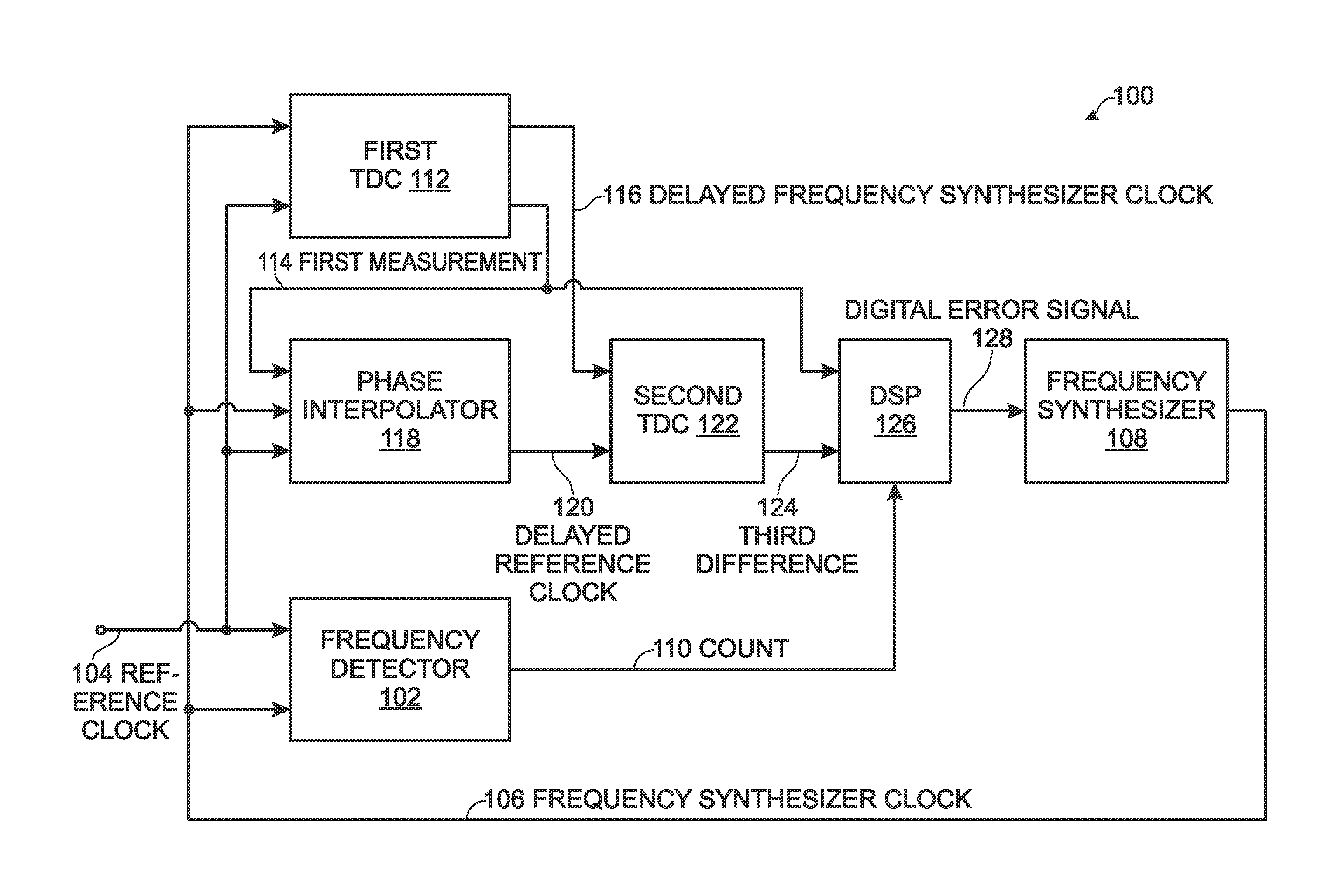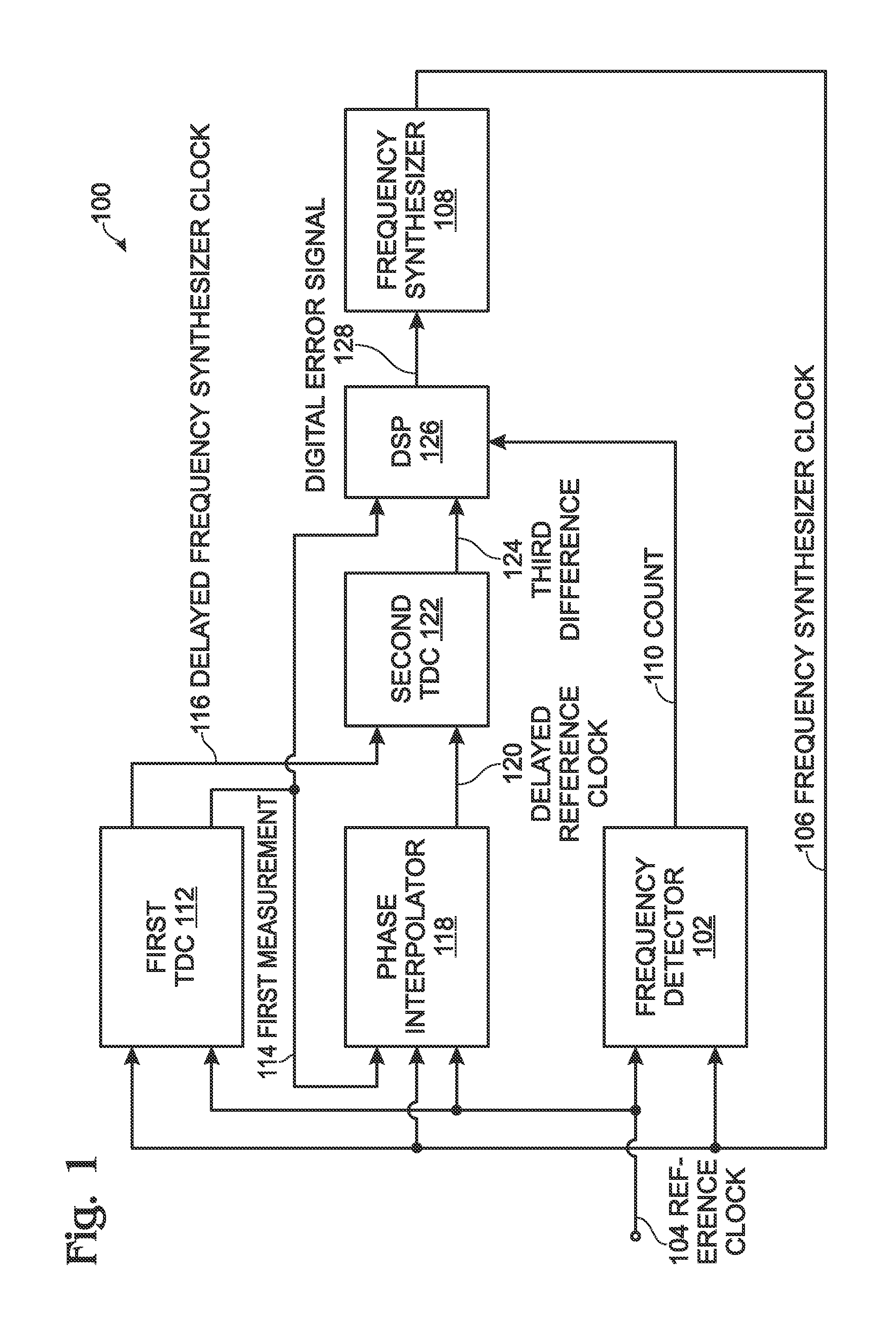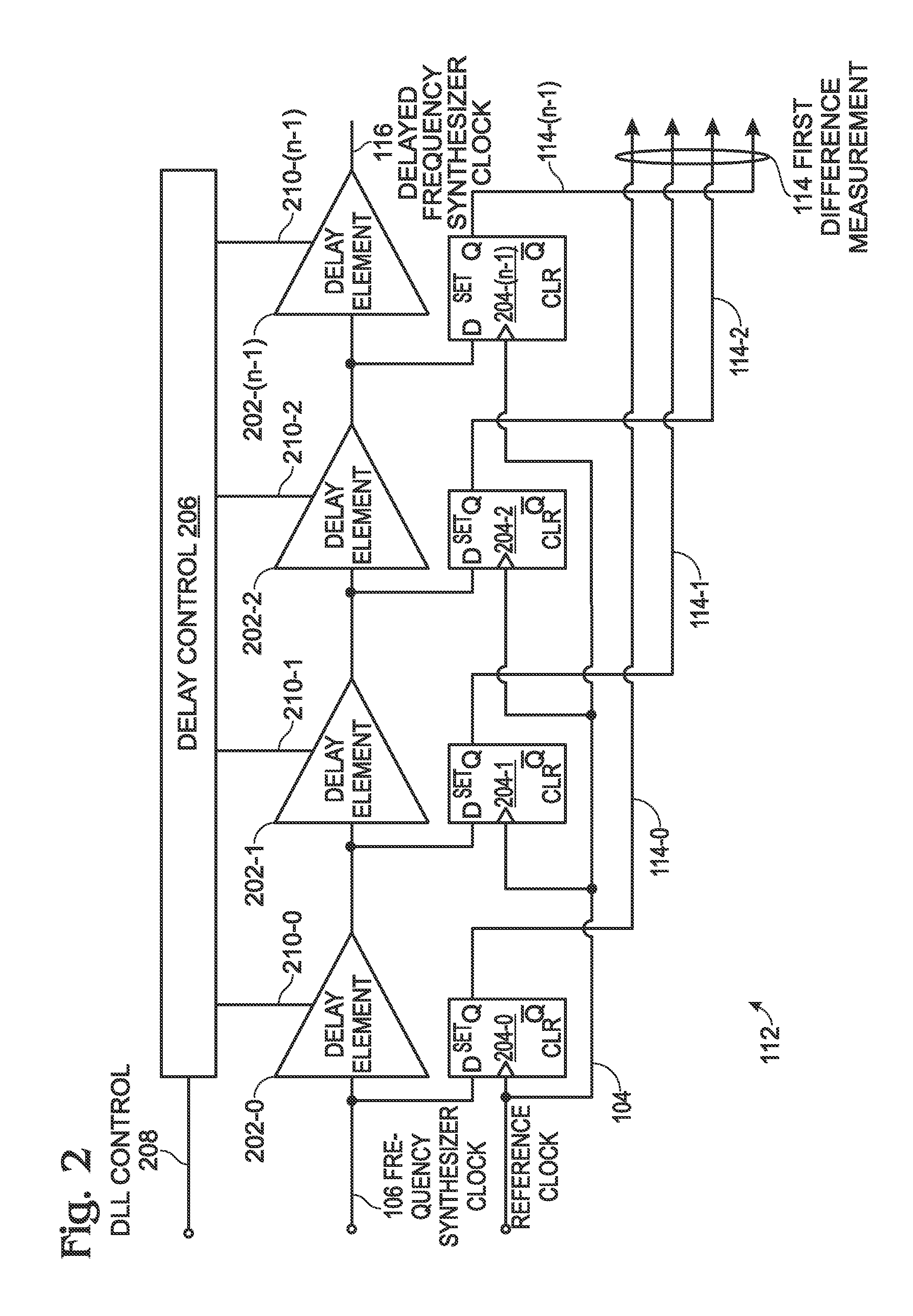Successive time-to-digital converter for a digital phase-locked loop
a phase-locked loop and digital phase technology, applied in the field of digital communications, can solve the problems of high power consumption, unattractive compared to conventional charge pump architecture, and high power consumption of fine resolution tdc, so as to improve the performance-to-power dissipation ratio of tdc, reduce power consumption, and power efficient high-performance digital plls
- Summary
- Abstract
- Description
- Claims
- Application Information
AI Technical Summary
Benefits of technology
Problems solved by technology
Method used
Image
Examples
Embodiment Construction
[0020]FIG. 1 is a schematic block diagram of a successive time-to-digital converter (STDC) and frequency synthesizer. The STDC 100 comprises a frequency detector 102 having an input on line 104 to accept a reference clock (REFCLK), and an input on line 106 to accept a frequency synthesizer clock (VCOCLK) from a frequency synthesizer 108. The frequency detector 102 has an output on line 110 to supply a count of the number of frequency synthesizer clock cycles per reference clock cycle (HSCNTROUT), also referred to as the count. A first TDC 112 has an input on line 104 to accept the reference clock, and an input on line 106 to accept the frequency synthesizer clock. The first TDC 112 measures a first difference between an edge of a reference clock period and a corresponding edge of a frequency synthesizer clock period, and provides the first difference measurement (CTDCOUT) at an output on line 114. The first TDC 112 also provides the frequency synthesizer clock delayed a full cycle (...
PUM
 Login to View More
Login to View More Abstract
Description
Claims
Application Information
 Login to View More
Login to View More - R&D
- Intellectual Property
- Life Sciences
- Materials
- Tech Scout
- Unparalleled Data Quality
- Higher Quality Content
- 60% Fewer Hallucinations
Browse by: Latest US Patents, China's latest patents, Technical Efficacy Thesaurus, Application Domain, Technology Topic, Popular Technical Reports.
© 2025 PatSnap. All rights reserved.Legal|Privacy policy|Modern Slavery Act Transparency Statement|Sitemap|About US| Contact US: help@patsnap.com



